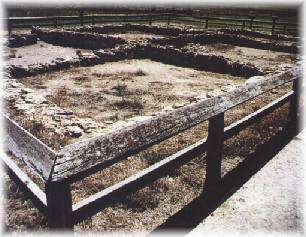El Quartelejo Pueblo Ruins
category : Archaeology
 See the northernmost pueblo in the United States and one of the first white settlements in Kansas: El Quartelejo Ruins.
See the northernmost pueblo in the United States and one of the first white settlements in Kansas: El Quartelejo Ruins.In the 1500s a group of Taos Indians migrated to the park region. They made pueblos and grew crops using irrigation ditches dug from a nearby spring. After 20 years they went back to their homes in the south. El Quartelejo was later reoccupied in 1701 by a group of Picurie Indians for nearly two years. Around 1717, Juan Uribarri, known as Jean Iturbi, (who led the explorer, La Salle to his fatal ambush) came to El Quartelejo and opened a trading post. After 1727 the site was abandoned and left to the weather and erosion. It disappeared, leaving no trace on the Kansas plains except a slight mound and some irrigation ditches which were later used by Herbert Steele for his large truck garden.
In the mid-1890s, the pueblo ruins were found by Steele and unearthed by H.T. Martin and Prof. Williston from the university of Kansas. Then, the site was forgotten until 1925 when the Daughters of the American Revolution set up a monument there. In 1964 the El Quartelejo Ruins achieved the National Historic Landmark Status and in 1970, the Kansas historical Society excavated and restored the area. Now, you can inspect the pueblo site with its foundation reconstructed. Information is posted detailing the lives of the Indians and the features of each room in the pueblo.
Address: Located in Lake Scott State Park
Come visit us in Scott City, Kansas